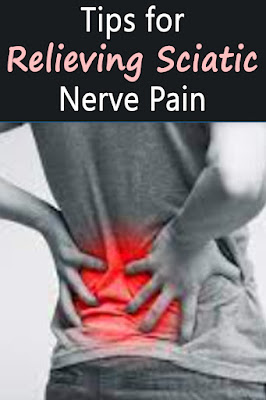Sciatica, characterized by pain that radiates along the path of the sciatic nerve from the lower back down to the legs, can be extremely painful and debilitating. Fortunately, there are several effective strategies you can use to relieve sciatic nerve pain and improve your quality of life. Here are some tips to help you manage and reduce sciatica pain:
1. Stay Active
Why It Works:
- Regular physical activity helps keep your muscles strong and flexible, reducing pressure on the sciatic nerve.
How to Do It:
- Engage in low-impact exercises such as walking, swimming, or cycling.
- Avoid prolonged periods of inactivity or bed rest.
2. Stretching Exercises
Why It Works:
- Stretching helps to relieve tension in the muscles surrounding the sciatic nerve, reducing pain and improving mobility.
Recommended Stretches:
- Knee to Chest Stretch: Lie on your back, bring one knee toward your chest, hold for 20-30 seconds, and switch legs.
- Piriformis Stretch: Sit or lie down, cross one leg over the other, and gently pull the crossed leg toward your chest.
3. Heat and Cold Therapy
Why It Works:
- Applying heat can help relax tight muscles, while cold therapy can reduce inflammation and numb acute pain.
How to Do It:
- Cold Therapy: Apply a cold pack to the affected area for 15-20 minutes, several times a day.
- Heat Therapy: Use a heating pad or warm towel on the painful area for 15-20 minutes.
4. Maintain Proper Posture
Why It Works:
- Good posture helps reduce strain on your lower back and sciatic nerve.
Tips for Good Posture:
- Sit with your back straight, shoulders back, and both feet flat on the floor.
- Use a lumbar roll or cushion to support your lower back when sitting.
5. Over-the-Counter Pain Relievers
Why It Works:
- Medications such as ibuprofen or acetaminophen can help reduce inflammation and alleviate pain.
How to Use:
- Follow the recommended dosage instructions on the label.
- Consult your healthcare provider if you have any concerns or underlying health conditions.
6. Massage Therapy
Why It Works:
- Massaging the lower back and gluteal muscles can help relieve muscle tension and improve circulation, reducing sciatic pain.
How to Do It:
- Use your hands or a massage tool to gently massage the affected area.
- Consider professional massage therapy for more effective relief.
7. Stay Hydrated
Why It Works:
- Proper hydration helps maintain healthy spinal discs and reduces inflammation.
How to Do It:
- Drink at least 8 glasses of water per day.
- Avoid excessive consumption of dehydrating beverages like caffeine and alcohol.
8. Use Ergonomic Furniture
Why It Works:
- Ergonomic furniture can help you maintain proper posture and reduce strain on your lower back.
What to Look For:
- Chairs with lumbar support.
- Adjustable desks and computer monitors to ensure proper alignment.
9. Practice Mindfulness and Relaxation Techniques
Why It Works:
- Stress and tension can exacerbate pain. Mindfulness and relaxation techniques can help you manage stress and reduce pain.
Techniques to Try:
- Deep breathing exercises.
- Meditation and yoga.
10. Seek Professional Help
Why It Works:
- A healthcare professional can provide personalized advice and treatment options for your specific condition.
When to Seek Help:
- If your pain is severe, persistent, or worsening.
- If you experience symptoms such as numbness, tingling, or weakness in your legs.
Conclusion
Sciatica pain can significantly impact your daily life, but with the right strategies, you can manage and reduce your symptoms. Incorporate these tips into your routine to find relief and improve your overall well-being. Always consult with a healthcare professional for a comprehensive treatment plan tailored to your needs.

